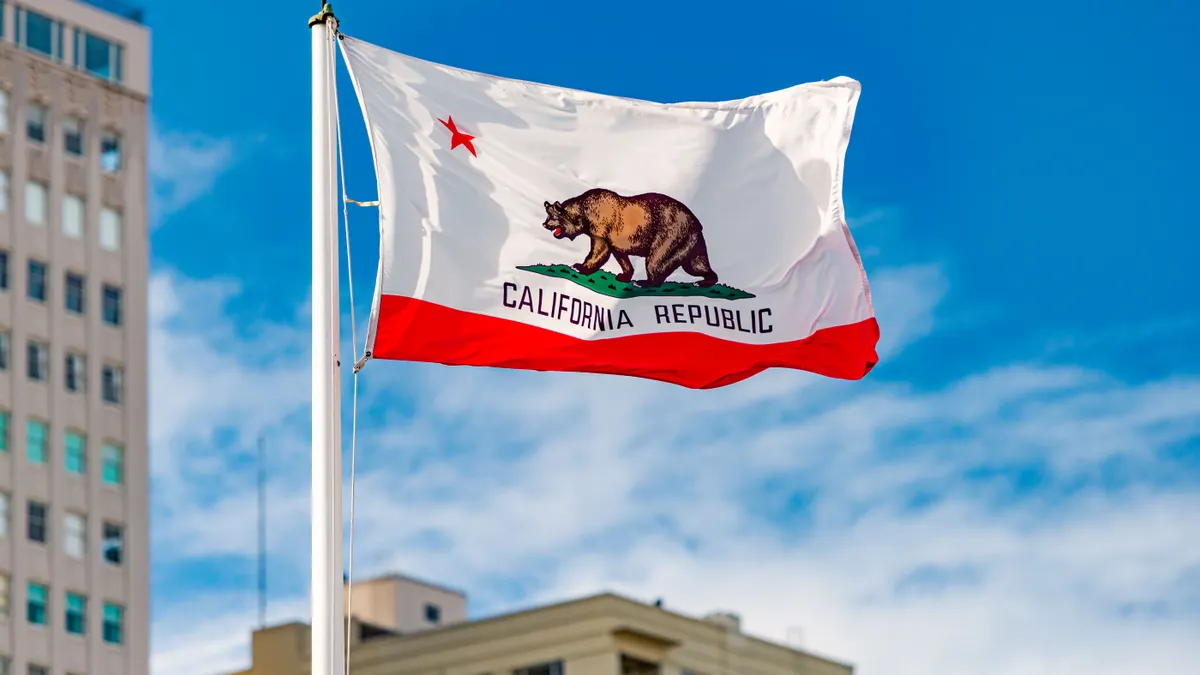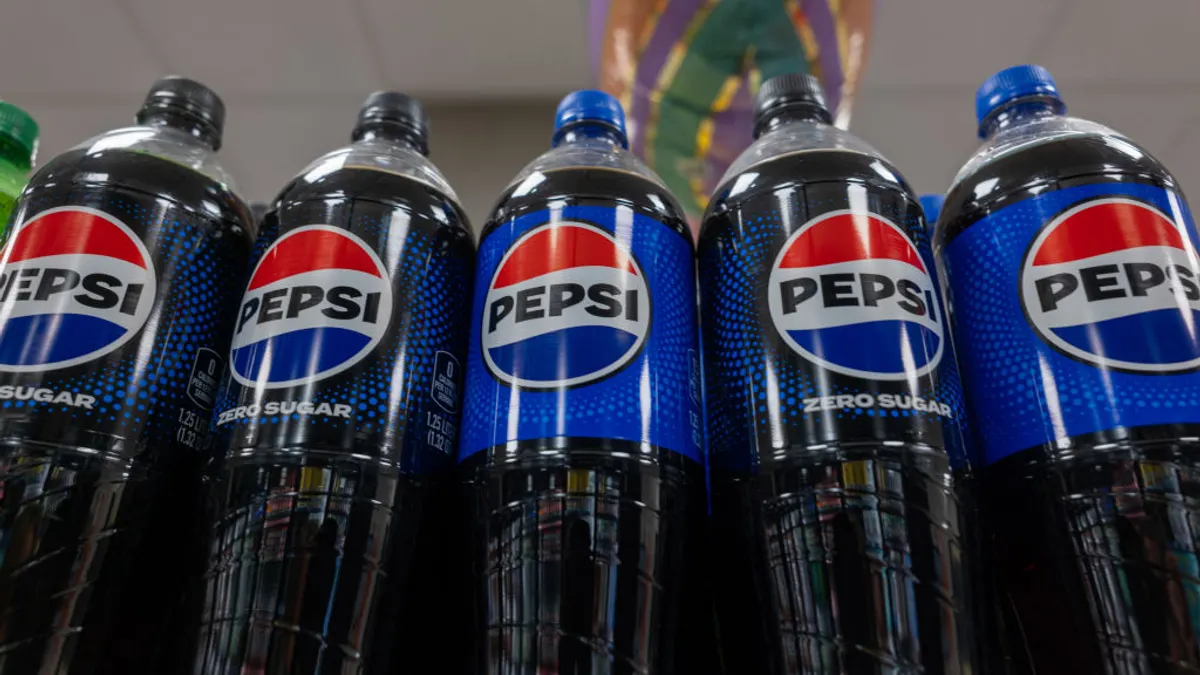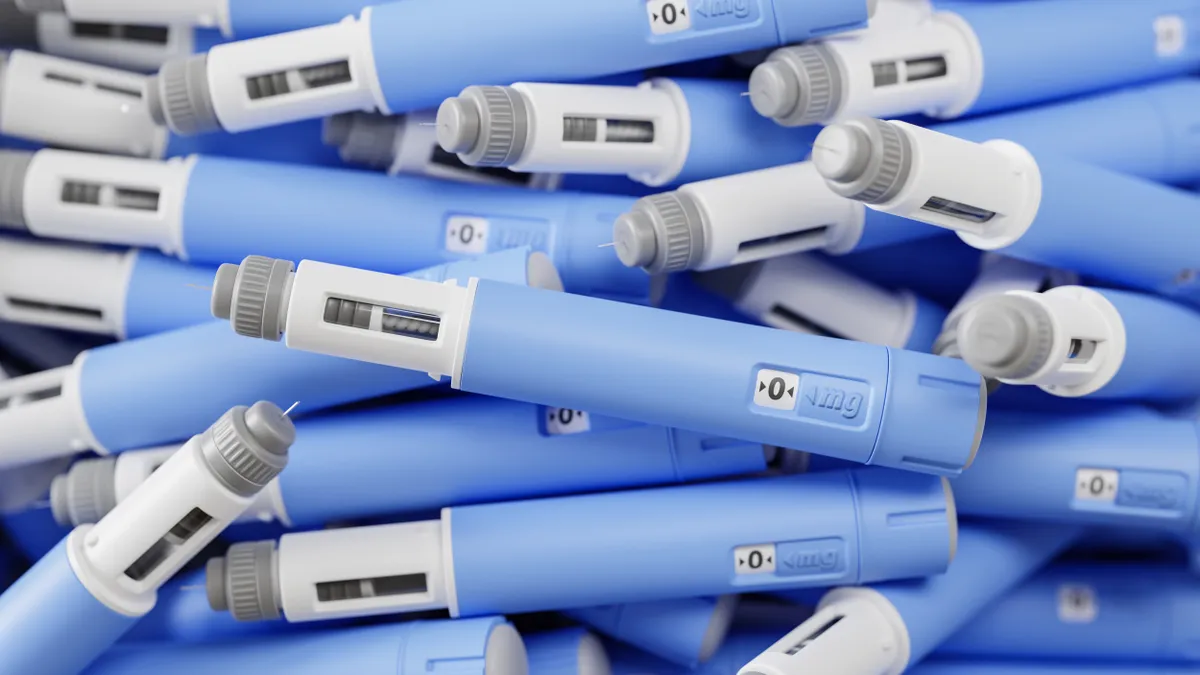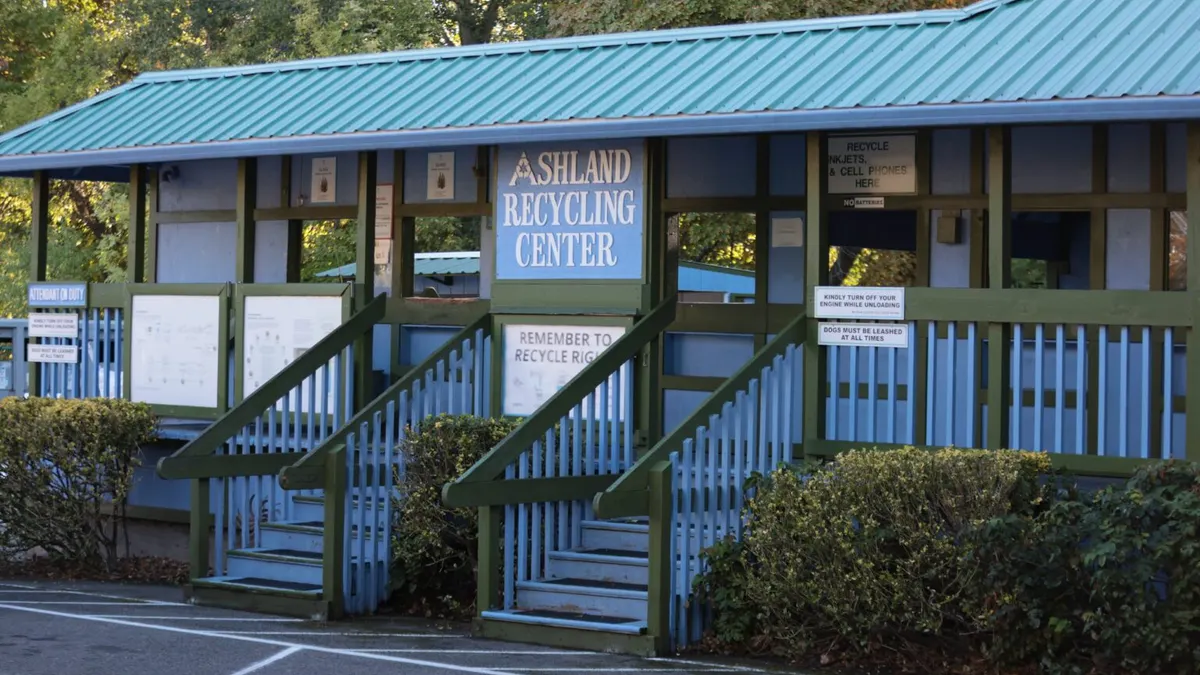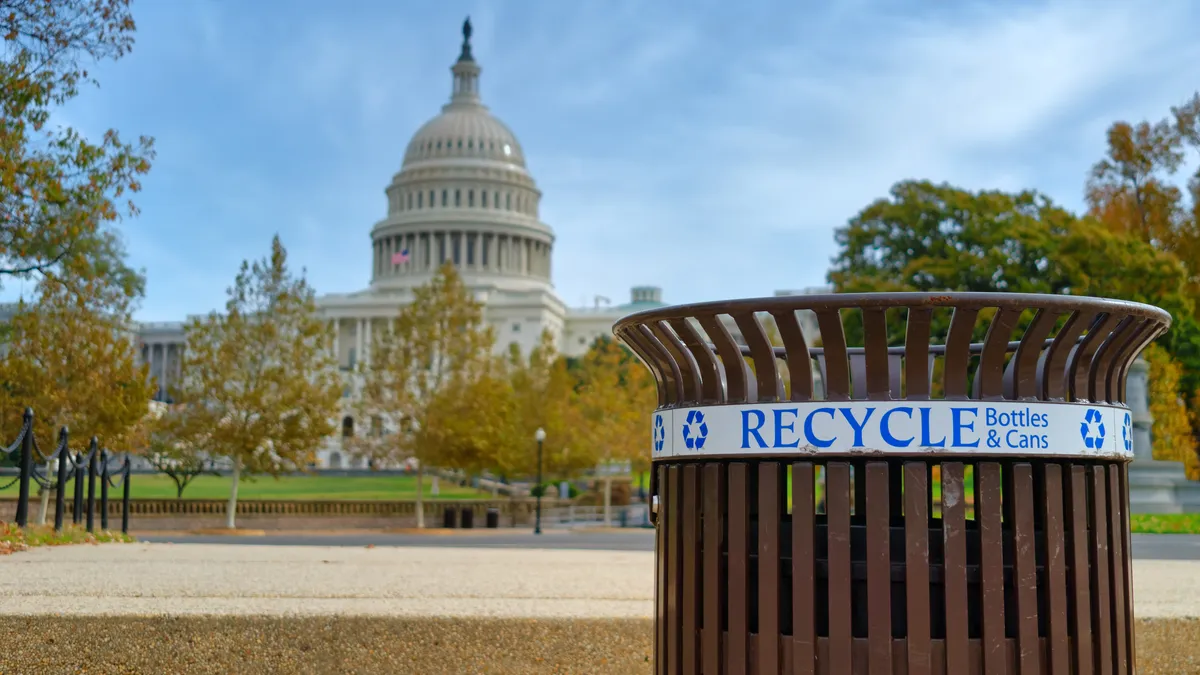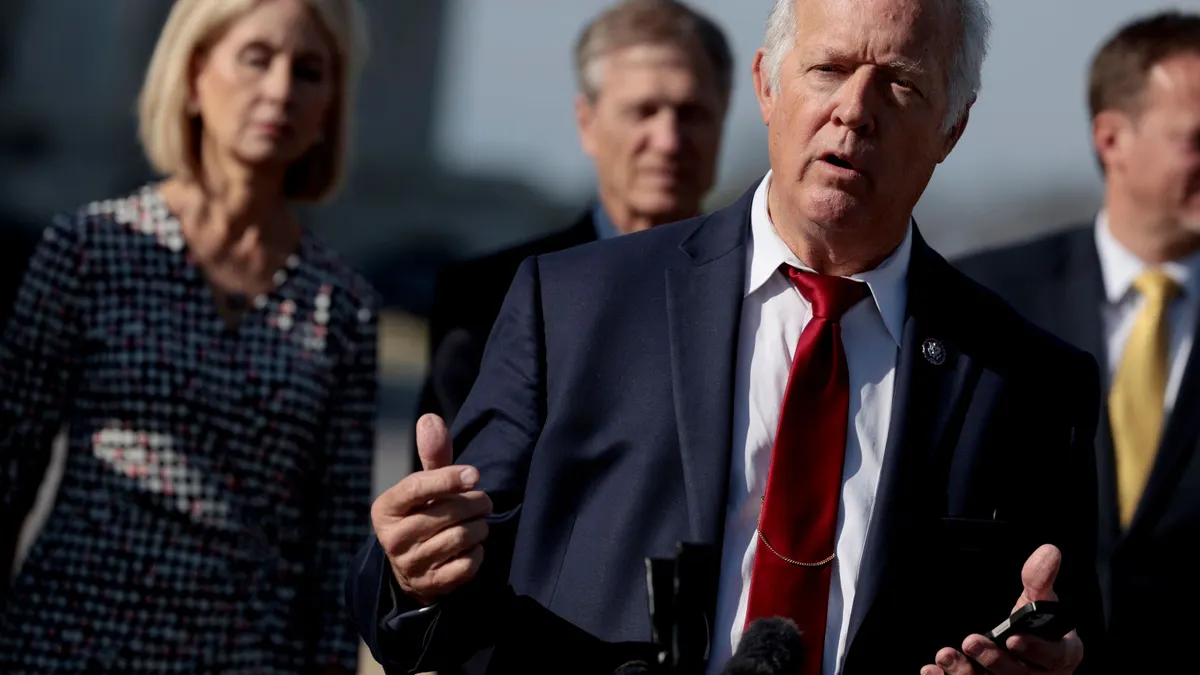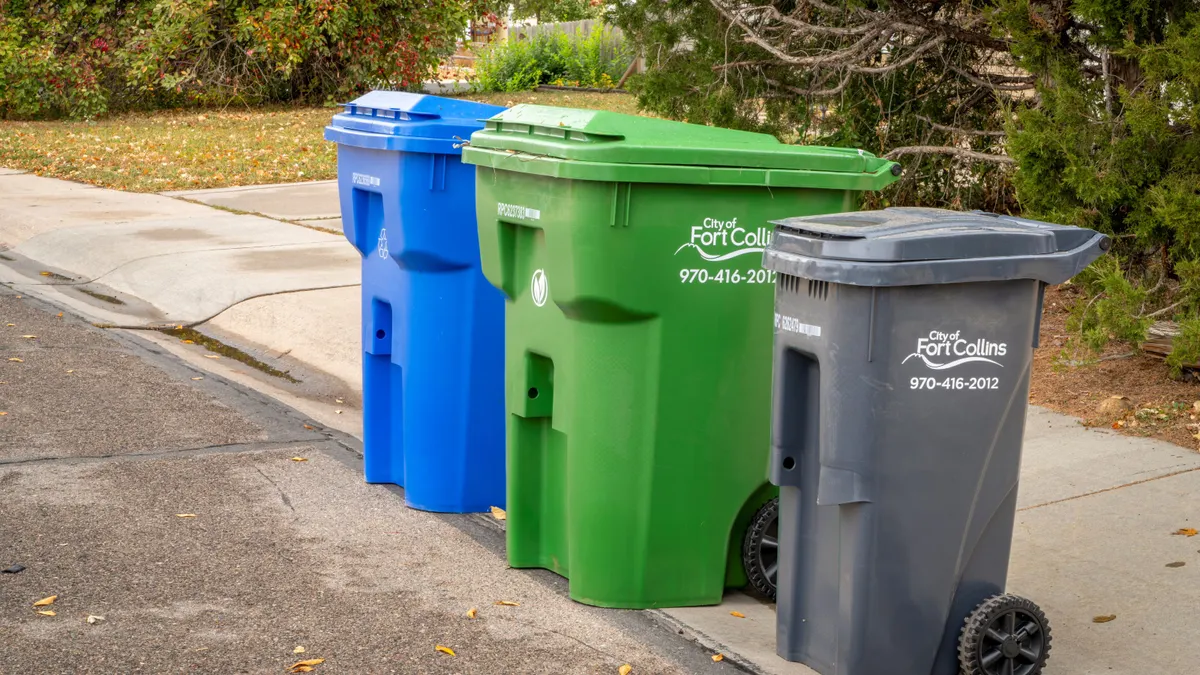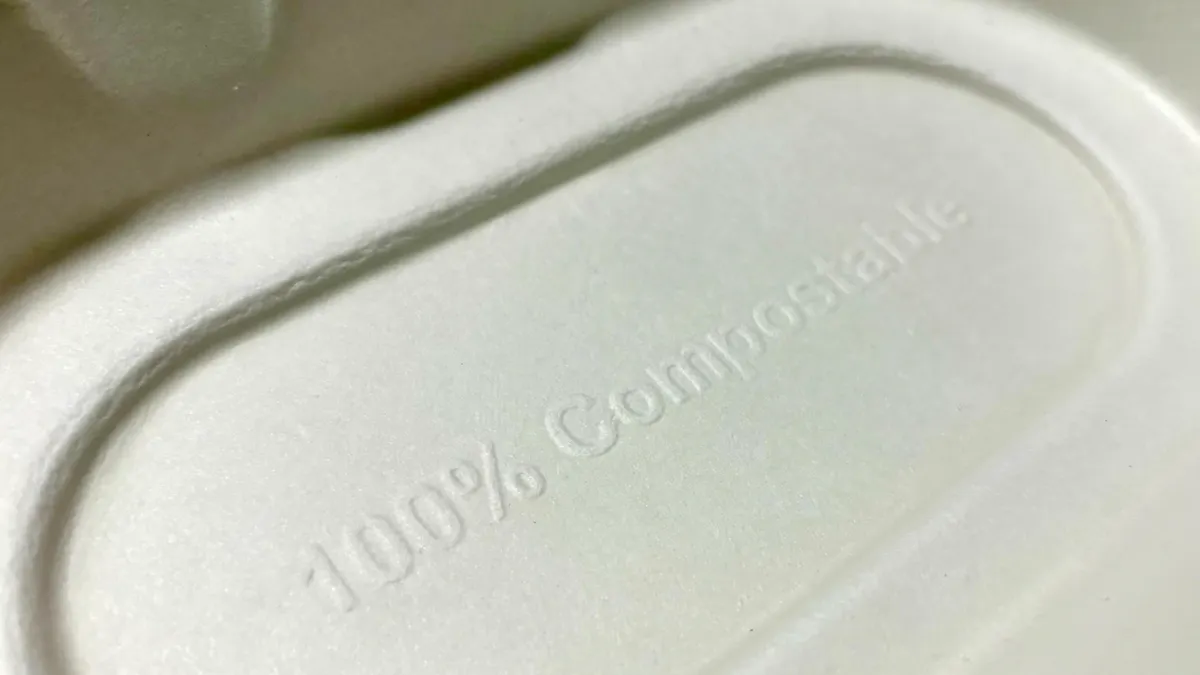After weathering legal challenges and an attempted delay by California Gov. Gavin Newsom, implementation of two major climate disclosure laws are around the corner: The Climate Corporate Data Accountability Act (SB 253) and the Climate-Related Financial Risk Act (SB 261).
These are the first laws in the U.S. to require companies to fully disclose their total greenhouse gas emissions and climate risks. Proponents of the efforts say this level of transparency is important for investors and consumers, and voluntary reporting efforts often fall short. Opponents, however, consider these new regulations burdensome and say they duplicate existing legal disclosures.
Public and private companies generating more than $1 billion in revenue must comply with SB 253 by disclosing the GHG emissions from their operations, known as scope 1, and from the power they consume, scope 2, starting in 2026.
Come 2027, they’ll also need to report scope 3 emissions, which includes everything else: transportation, logistics, waste generated in factories and offices, emissions associated with products’ use and end of life, and much more.
For most large companies, reporting scope 3 emissions will entail tracking many thousands of emitting sources, many of which will be part of partners’ or suppliers’ scope 1 or 2 emissions.
A spectrum of readiness
Today, organizations obligated under SB 253 represent the full spectrum of readiness, said Alexis Voeltner, senior sustainability consultant with UL Solutions.
“Some are way ahead of the game,” said Voeltner, whose company provides testing, inspection and certification services. They may already be tracking emissions using science-based targets and reporting framework that will fulfill SB 253 requirements, and “are now looking to try to achieve those targets.”
Kristina Wyatt, deputy general counsel and chief sustainability officer at Persefoni, which provides carbon accounting and sustainability management software, agreed. Wyatt said compliance can be a step toward other goals. “There are many companies that are looking at these disclosures as a means of gaining reputational and competitive advantage,” she said.
Jesse Medlong, a DLA Piper attorney who supports clients on sustainability issues, said that some companies have started requesting emissions data, related to the products they buy, from their vendors. Some companies are even adding data requests to their vendor contacts, Medlong said.
Reusable packaging provider Orbis considers sharing emissions data, which it tracks in order to determine the life-cycle emissions of its products like pallets and bulk containers, a value-add for its customers.
“This assessment compares reusable and single-use packaging and helps companies calculate the impact reusable packaging can have on the environment,” Lynn Hediger, the vice president of product management for Orbis, said via email.
Orbis tracks its scope 1, 2 and 3 emissions and shares the data with customers.
“Our scope 1 and 2 GHG emissions are scope 3 GHG emissions for our customers,” Hediger wrote. “We’re able to provide prorated scope 1 and scope 2 GHG emission data for our customers based on their percentage of a facility’s overall material consumption.”
Packaging manufacturer Amcor worked with nonprofit energy research organization Rocky Mountain Institute to track and quantify the upstream climate effects of its plastic production.
A resulting case study, published in August and based on a pilot project conducted earlier this year, notes that collecting emissions data (the tons of carbon dioxide equivalent per ton of resin) from all of its suppliers can be challenging — especially related to methane, which is a much more potent short-term greenhouse gas than carbon dioxide.
The study allowed the company to find gaps in its reporting and obtain a fuller accounting of the greenhouse gas emissions related to its products by relying on primary source data that showed, for example, embodied methane emissions related to plastic production.
Amcor will use the results to improve and standardize data collection from its suppliers and downstream partners. The company’s goal is to reduce its scope 3 emissions by 32.5% by 2033, based on 2022 data.
With the significant climate intensity of primary plastic production — it accounted for 5.3% of global emissions — manufacturers that use less conventional plastic may be able to lower scope 3 emissions.
Scoping out scope 3
With scope 1 and 2 reporting requirements kicking in next year, companies that need to comply with SB 253 will likely already be well on their way to tracking scope 3 emissions.
But for these companies in the manufacturing sector, and for their suppliers, disclosing scope 3 emissions could be a complex process that requires collaboration with partners and customers, from logistics companies to packaging providers, to get visibility into emissions across their supply chains.
The first step, said Voeltner, is for companies to determine which sources they need to track, based on which are material to their operations.
The Greenhouse Gas Protocol’s scope 3 reporting framework defines 15 categories of scope 3 emissions. Eight of them are upstream sources, such as purchased goods and services, fuel and waste generated in operations. The remaining categories are downstream, such as processing, use and end-of-life treatment of sold products.
“You would typically start [by determining] which of those 15 categories are not applicable,” she said. If a company doesn’t lease any buildings, for example, there are no indirect emissions from building operations to count.
“Most companies can narrow it down already from 15 to eight in the first pass. And then from there looking at, okay, we have these maybe eight categories left that could be applicable. Let's start to do a rough estimation of how much each of those could be based off of purchases and financial data.”
This process might further weed down the list of material sources. “You can start to see which categories have the highest intensity of emissions and start to dig deeper,” she said.
Service providers are building out capabilities to support companies that need to begin tracking their emissions.
UL Solutions and Persefoni each offer advisory services and software built to help companies track their scope 3 GHG emissions that can be used for SB 253 compliance. And in Europe, packaging provider Zeus Packaging recently announced the Zeus Sustain Carbon IQ software designed to help provide access to emissions data. It can be used to track scope 3 data.
Compliance questions
SB 253 does not obligate companies to reduce their GHG emissions. It does, however, require them to report emissions to provide transparency to investors and consumers into the impact of their operations and supply chains.
The law requires that companies provide scope 3 emissions data starting in 2027, covering 2026 data, and to do so using the best available methods. It also requires that the data be deemed accurate through the use of a third-party assurance provider, starting in 2030. Plus, this oversight requirement is to provide “limited” assurance of scope 3 disclosures.
In July, the California Air Resources Board said it was in the “informal, information-gathering stage” for implementing SB 253 and SB 261, with regulations potentially coming by the end of the year.
In an Aug. 21 webinar, CARB described three levels of assurance: absolute, reasonable and limited. It said that limited assurance “requires a lower level of confidence and quality than reasonable or absolute assurance."
Persefoni’s Wyatt said companies that are not yet collecting emissions data from suppliers can use estimates based on how much they spend on goods or services in their scope 3 reporting.
“The granularity of the data on the other hand is not as great. It's really industry average-based data, but it's a good starting point,” she said. And, importantly, it's usable in the GHG Protocol framework that companies will use to disclose emissions to CARB.
For companies, it’s best to act as though the laws will take effect as planned, DLA Piper’s Medlong said.
Opposition in California, pending laws elsewhere
A federal court in August denied a motion for a preliminary injunction challenging SB 253 and SB 261. Even though the ultimate resolution of the litigation, brought by the U.S. Chamber of Commerce, is still pending, the ruling means that the laws will be enforced as planned starting next year.
A handful of other states are eyeing disclosure rules of their own. And this spring the European Parliament voted to delay implementation of and scale back two comprehensive disclosure requirements — the Corporate Sustainability Reporting Directive and the Corporate Sustainability Due Diligence Directive.
This time last year, the federal government was on track to require publicly traded companies to disclose scope 1 and 2 emissions if deemed financially material to investors. But a coalition including the Chamber sued, saying the U.S. Securities and Exchange Commission lacked authority to require such reporting. With the legislation pending, the commission paused enforcement of the new requirements. Now it’s in limbo, with the SEC neither rescinding nor defending the rule.
But as the fourth largest economy in the world, California’s disclosure rules mean thousands of companies are preparing to comply.
“SB 253 is really where we're seeing the most client interest around what to do next to adapt to what's becoming the new reality on climate disclosure,” said Medlong. “It's definitely more ambitious — or aggressive depending on your perspective — than any other law in the U.S. right now.”

